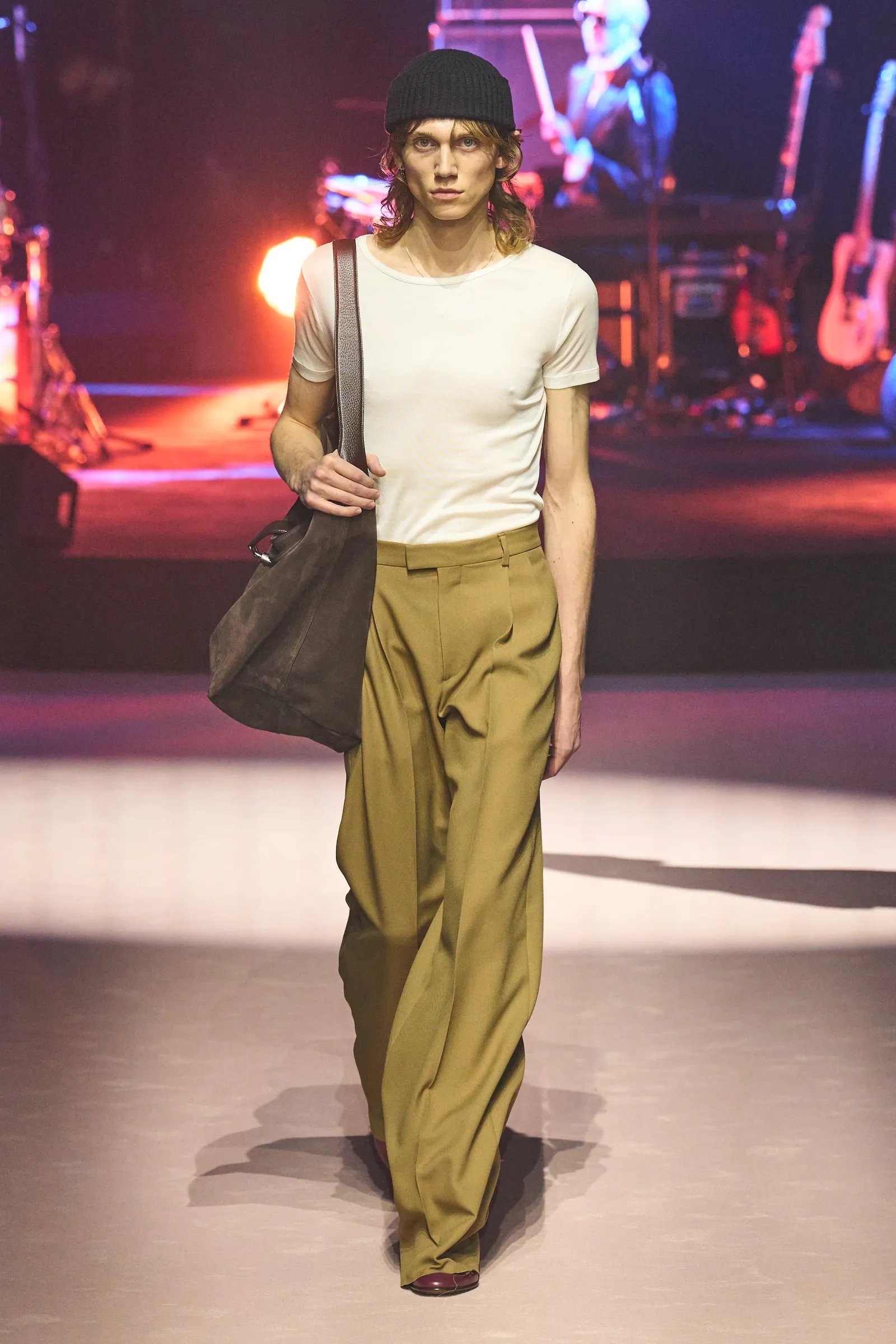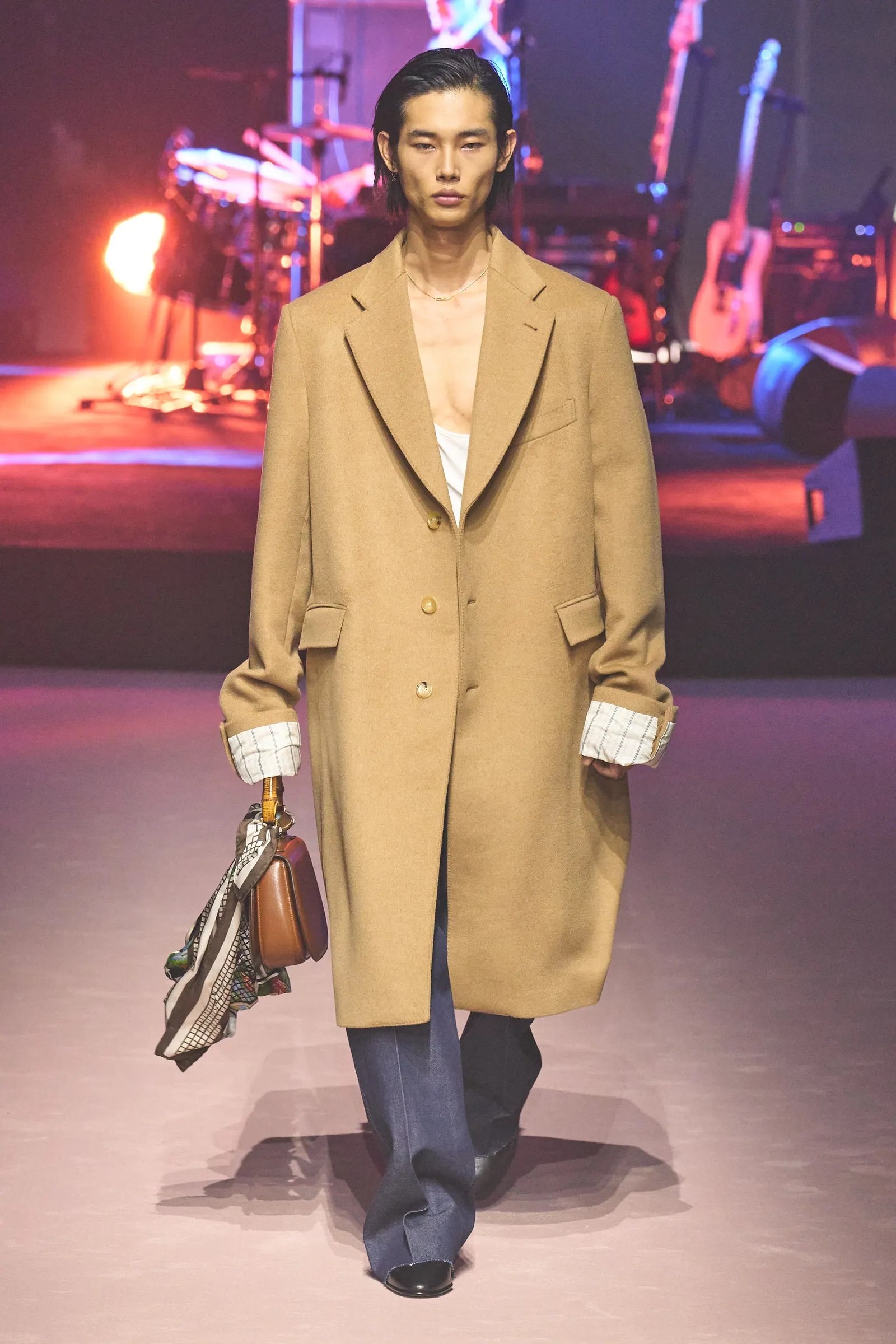Quiet Luxury, a Result of "Recession Core"
Designer brand’s pendulum continues to swing towards the idea of “quiet luxury”, a minimalistic approach focusing on quality items which wouldn’t be recognized at a quick glance unless you are a knowledgeable fashion consumer or if you spend time within wealthy social circles.
Gucci was the latest addition to this new movement within the luxury market. After Alessandro Michele’s departure from the brand, Gucci’s Menswear Fall 2023 collection took on a different approach from its former loud maximalist agenda—it was back to the basics. Gucci’s in-house design team opted for boxy suiting and white undergarments, while focusing primarily on a neutral color palette with occasional pops of color interwoven throughout. Towards the end of the collection a few pieces did pay homage to Michele’s maximalist aesthetic, but majority of the collection seemed to embrace a former era of Gucci, pre-Michele of course.
We’ve seen this shift occur at other luxury houses before. For instance, John Galliano’s Dior was a display of incredibly opulent works of art, whereas Maria Grazia Chiuri’s Dior is more streamlined and accessible to a larger consumer base. The same goes for Chanel. Karl Lagerfeld reinvented Chanel for a younger audience by creating cropped silhouettes, incorporating decadent jewelry, and overall being chic but daring. Meanwhile Virginie Viard’s Chanel holds an air of romanticism by using fluid lines and softer colors simultaneously using heritage as her inspiration, but her collections have been criticized for being too simplistic (and not as “cool” as Lagerfeld’s)—but it sells! We can see this being true from Chanel’s financial reports. Under Karl Lagerfeld, the company made $11.1 billion in 2018, whereas under Virginie Viard the company made $15.6 billion in 2021. Minimalist fashion sells and the people at the top are recognizing this and implementing it into their product lines, showing that quiet luxury could be the future of the luxury market.
As fashion is an art form, it could be heartbreaking to consider that designers are stepping away from this raw self-expression and artistic creation because it’s not sellable. Some of the most memorable moments in fashion have been created by maximalist collections—like Alexander McQueen’s “Horn of Plenty” or “Plato’s Atlantis”. And as we look towards the future, we could be seeing less of this artistry, which for many of us was the reason we fell in love with fashion in the first place, but ultimately clothing has to be wearable to a wider scope of people than just runway models and celebrities at a red carpet event in order to remain profitable. Now we can only hold out hope that amid the neutrals and simplicity, a designer will incorporate a few bold looks to satisfy our cravings.
This push towards simpler styles which can be sold at a higher rate could be a result of the looming recession and political turmoil, which internet users have coined “recession core”. During times of struggle some consider it tacky to show off exuberant fashions like dopamine dressing or logomania and therefore adopt modest timeless looks. As the economic situation continues to get worse, more consumers will crave practicality over adornment and the luxury market is recognizing this consumer demand. Currently consumers seem to be craving fewer accessories, muted color pallets, androgyny, and overall functionality; and besides Gucci’s entrance to the minimalist space many other designers have been following suit to appease these wants such as Givenchy, Saint Laurent, JW Anderson, and Vtmnts.
Some may feel overwhelmed by all the new trends that keep coming out the woodwork and are choosing to forego the constant need to update their closets with the “hottest-newest-it” item. Seriously, there are too many -cores to keep up with now, and what’s worse is half of these new clothes that are being bought in order to engage with these micro trends are ending up in second hand stores within a couple months of its purchase—talk about wasteful. Majority of the time, fashion enthusiasts don’t even like the trends their participating in but feel the need to do so because of social media pressure. And those who’ve had enough of this are instead building a wardrobe with high quality basics that can last a lifetime. Quiet luxury is less of a trend, but a way to rebuild your clothing collection with items you won’t regret when the next season comes along.


